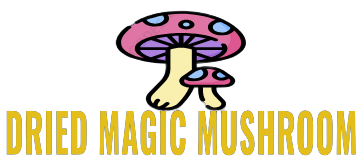Australia, LSD, South Australia
Buying LSD in Perth
Buying LSD in Perth
buy lsd online Perth, LSD acid tabs for sale Perth, LSD for sale Canberra, Buy LSD in Darwin, Hobart, Cairns, Townsville, Mildura, Devonport
LSD was introduced as a commercial medication under the trade-name Delysid for various psychiatric uses in 1947.
LSD was brought to the attention of the United States in 1949 by Sandoz Laboratories because they believed LSD might have clinical applications.
Throughout the 1950s, mainstream media reported on research into LSD and its growing use in psychiatry, and undergraduate psychology students taking LSD as part of their education described the effects of the drug. Time magazine published six positive reports on LSD between 1954 and 1959.
LSD was originally perceived as a psychotomimetic capable of producing model psychosis.[12] By the mid-1950s, LSD research was being conducted in major American medical centers, where researchers used LSD as a means of temporarily replicating the effects of mental illness. One of the leading authorities on LSD during the 1950s in the United States was the psychoanalyst Sidney Cohen. Cohen first took the drug on October 12, 1955 and expected to have an unpleasant trip, but was surprised when he experienced “no confused, disoriented delirium.”] He reported that the “problems and strivings, the worries and frustrations of everyday life vanished; in their place was a majestic, sunlit, heavenly inner quietude.”[12] Cohen immediately began his own experiments with LSD with the help of Aldous Huxley whom he had met in 1955. In 1957, with the help of psychologist Betty Eisner, Cohen began experimenting on whether or not LSD might have a helpful effect in facilitating psychotherapy, curing alcoholism, and enhancing creativity.[12] Between 1957 and 1958, they treated 22 patients who suffered from minor personality disorders.[12] LSD was also given to artists in order to track their mental deterioration,[12] but Huxley believed LSD might enhance their creativity. Between 1958 and 1962, psychiatrist Oscar Janiger tested LSD on more than 100 painters, writers, and composers.
In one study in the late 1950s, Dr. Humphry Osmond gave LSD to alcoholics in Alcoholics Anonymous who had failed to quit drinking.[15] After one year, around 50% of the study group had not had a drink — a success rate that has never been duplicated by any other means.[16] Bill Wilson, the founder of Alcoholics Anonymous, participated in medically supervised experiments on the effects of LSD on alcoholism and believed LSD could be used to cure alcoholics.
In the United Kingdom the use of LSD was pioneered by Dr. Ronald A. Sandison in 1952, at Powick Hospital, Worcestershire. A special LSD unit was set up in 1958. After Sandison left the hospital in 1964, medical superintendent Arthur Spencer took over and continued the clinical use of the drug until it was withdrawn in 1965. In all, 683 patients were treated with LSD in 13,785 separate sessions at Powick, but Spencer was the last member of the medical staff to use it.
From the late 1940s through the mid-1970s, extensive research and testing was conducted on LSD. During a 15-year period beginning in 1950, research on LSD and other hallucinogens generated over 1,000 scientific papers, several dozen books, and six international conferences. Overall, LSD was prescribed as treatment to over 40,000 patients. Film star Cary Grant was one of many men during the 1950s and 1960s who were given LSD in concert with psychotherapy. Many psychiatrists began taking the drug recreationally and sharing it with friends. Dr. Leary’s experiments (see Timothy Leary below) spread LSD usage to a much wider segment of the general populace.
Sandoz halted LSD production in August 1965 after growing governmental protests at its proliferation among the general populace. The National Institute of Mental Health in the United States distributed LSD on a limited basis for scientific research. Scientific study of LSD largely ceased by about 1980 as research funding declined, and governments became wary of permitting such research, fearing that the results of the research might encourage illicit LSD use. By the end of the 20th century, there were few authorized researchers left, and their efforts were mostly directed towards establishing approved protocols for further work with LSD in easing the suffering of the dying and with drug addicts and alcoholics.
A 2014 study showed evidence that LSD can have therapeutic benefits in treating anxiety associated with life-threatening diseases. Rick Doblin, an American drug researcher, described the work as “a proof of concept” that he hoped would “break these substances out of the mold of the counterculture and bring them back to the lab as part of a psychedelic renaissance.”
Eight subjects received a full 200-microgram dose of LSD, while four others received one-tenth as much. Participants then took part in two LSD-assisted therapy sessions two to three weeks apart. Subjects who took the full dose experienced reductions in anxiety averaging 20 per cent while those given the low dose reported becoming more anxious.
When subjects taking the low dose were switched to the full dose they too showed reduced anxiety, with the positive effects lasting for up to a year. The effects of the drug itself lasted for up to 10 hours with participants talking to Dr Gasser throughout the experience.
“These results indicate that when administered safely in a methodologically rigorous medically supervised psychotherapeutic setting, LSD can reduce anxiety,” the study concludes, “suggesting that larger controlled studies are warranted.
buy lsd online Perth, LSD acid tabs for sale Perth, LSD for sale Canberra, Buy LSD in Darwin, Hobart, Cairns, Townsville, Mildura, Devonport
